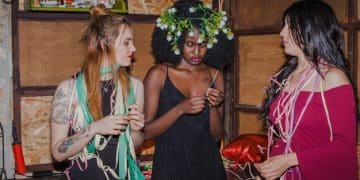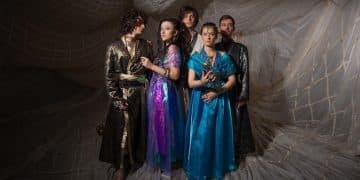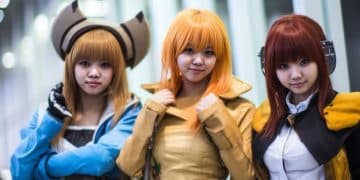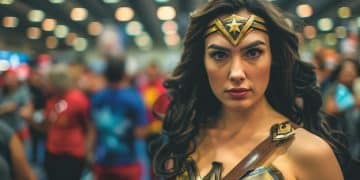Cosplay: Expressing Creativity and Community in Geek Culture

Cosplay, short for “costume play,” is a vibrant subculture where enthusiasts create and wear costumes to embody characters from various fictional works, celebrating creativity, craftsmanship, and community.
In the realm of Geek Lifestyle, few activities blend creativity, craftsmanship, and community quite like cosplay. It’s not just about dressing up; it’s about embodying a character and sharing that passion with others who understand the dedication and artistry involved.
What is Cosplay? A Deep Dive into Costume Play
Cosplay, a portmanteau of “costume play,” extends beyond mere costume wearing. It involves embodying a character through meticulous attire, mannerisms, and performance. This form of artistic expression is deeply rooted in geek culture, encompassing characters from anime, manga, video games, comic books, movies, and television shows.
The core of cosplay lies in the creation and presentation of a character, often requiring significant time, effort, and skill. Cosplayers dedicate themselves to replicating every detail of their chosen character, from the stitching on a garment to the styling of a wig.
The Origins of Cosplay
While the modern concept of cosplay emerged in Japan in the 1970s, its roots can be traced back to science fiction conventions in the United States. Forrest J Ackerman, a science fiction fan and writer, is often credited with creating the first documented example of cosplay when he wore a self-made futuristic costume to the 1939 World Science Fiction Convention in New York.
However, it was in Japan that cosplay truly blossomed into a distinct subculture. The term “cosplay” itself was coined by Nobuyuki Takahashi in 1984 after attending the World Science Fiction Convention in Los Angeles. He used the term to describe the costumed fans he observed there, and it quickly gained popularity in Japan.
- Early cosplay focused primarily on characters from science fiction and fantasy genres.
- Anime and manga became increasingly popular sources of inspiration for cosplayers in the 1980s and 1990s.
- Conventions such as Comiket in Japan provided platforms for cosplayers to showcase their creations and connect with one another.
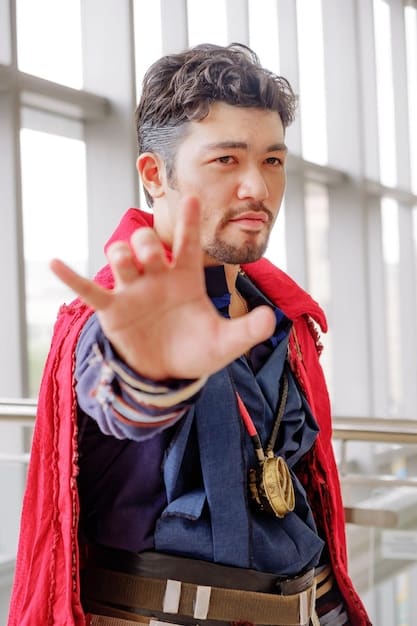
Today, cosplay is a global phenomenon, with thriving communities and conventions in countries around the world. It has evolved from a niche hobby into a mainstream form of creative expression, embraced by people of all ages, genders, and backgrounds.
The Art and Craftsmanship Behind Cosplay
Creating a cosplay costume is an intricate process that often combines various skills, including sewing, crafting, and makeup artistry. Cosplayers often spend weeks, months, or even years perfecting their costumes.
Materials used in cosplay vary widely depending on the character and the cosplayer’s budget. Fabric, foam, Worbla, and 3D-printed components are commonly used to create costumes and props. The process often involves pattern making, cutting, sewing, painting, and weathering to achieve the desired look.
Techniques and Materials
Cosplayers employ a wide range of techniques to bring their visions to life. Sewing is essential for creating garments, while foam crafting is used to make armor and props. Worbla, a thermoplastic material, is favored for its versatility and ability to be molded into complex shapes. 3D printing has also become increasingly popular for creating intricate and precise components.
Makeup is another crucial aspect of cosplay, allowing cosplayers to transform their appearance and further embody their characters. Wigs are often styled and customized to match the character’s hair.
The Importance of Accuracy and Detail
Many cosplayers strive for accuracy and attention to detail in their costumes. This involves carefully studying reference images of the character and meticulously replicating every aspect of their design. The pursuit of accuracy is often driven by a desire to honor the character and demonstrate respect for the source material.
- Researching the character’s design and backstory is essential for creating an accurate cosplay.
- Attention to detail in the construction and styling of the costume can significantly enhance the overall impact.
- Cosplayers often share tips and tutorials online, helping one another improve their skills and techniques.
The dedication and craftsmanship that cosplayers invest in their costumes are a testament to their passion and commitment to the art form. It requires a great deal of time, patience, and creativity to bring a fictional character to life in a tangible form.
Cosplay as Performance: Embodying the Character
Cosplay is not merely about wearing a costume; it’s about embodying a character and conveying their personality through mannerisms, poses, and interactions with others. This performative aspect of cosplay adds another layer of depth and complexity to the art form.
Cosplayers often study their chosen characters extensively, watching their appearances in movies or shows, reading their dialogues in comics, or playing the games they are featured in to understand their personality and characteristics. They then try to replicate those traits in their own performances.
Posing and Photography
Posing is a crucial element of cosplay performance. Cosplayers often practice poses that are iconic to their characters, capturing their essence and conveying their personality through body language. Photography plays a vital role in documenting and sharing these performances.
Cosplay photoshoots can range from simple snapshots taken at conventions to elaborate studio sessions with professional photographers. The goal is to capture the character in a dynamic and visually appealing way, showcasing the cosplayer’s costume and performance skills.
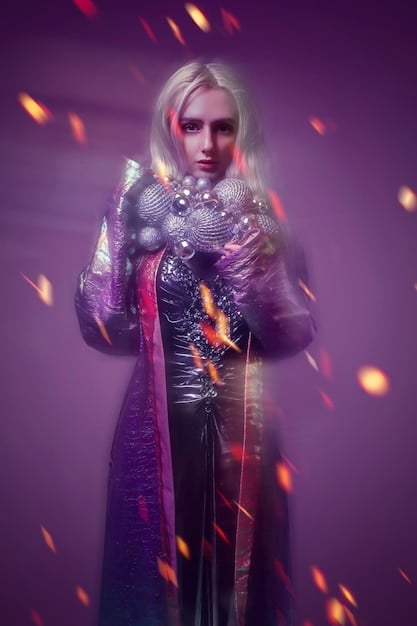
Interacting with Others
Interacting with other cosplayers and fans is another essential aspect of cosplay performance. Cosplayers often engage in character interactions, recreating scenes from the source material or improvising new ones. These interactions can be entertaining and engaging for both the cosplayers and the audience.
Many cosplayers also participate in cosplay competitions, where they are judged on their costumes, performances, and overall embodiment of the character. These competitions provide a platform for cosplayers to showcase their skills and creativity and receive recognition from their peers.
- Studying the character’s personality and mannerisms is essential for an authentic performance.
- Practicing poses and expressions can help cosplayers convey the character’s emotions and intentions.
- Interacting with other cosplayers and fans can create memorable and engaging experiences.
By embodying the character, cosplayers bring them to life in a way that is both captivating and transformative. It’s an opportunity to step into the shoes of a beloved fictional character and share that experience with others.
Cosplay and Community: Building Connections Through Shared Passion
Cosplay is more than just a hobby; it’s a community. Cosplayers often form strong bonds with one another through their shared passion for costuming and character embodiment. Conventions and online platforms provide opportunities for cosplayers to connect, collaborate, and support one another.
The cosplay community is known for its inclusivity and acceptance. People of all ages, genders, and backgrounds are welcome to participate, regardless of their skill level or experience. This welcoming atmosphere makes cosplay a particularly appealing hobby for those who may feel like outsiders in other social circles.
Conventions and Events
Conventions are a central part of the cosplay community. These events provide a space for cosplayers to showcase their costumes, meet other fans, and participate in workshops and panels. Conventions often feature cosplay competitions, where cosplayers can compete for prizes and recognition.
Some of the largest and most popular conventions for cosplayers include Comic-Con International in San Diego, Anime Expo in Los Angeles, and Dragon Con in Atlanta. These events attract tens of thousands of attendees each year and feature a wide range of cosplay-related activities.
Online Communities
Online communities, such as forums, social media groups, and dedicated cosplay websites, also play a vital role in connecting cosplayers. These platforms provide a space for cosplayers to share their work, ask questions, and offer support to one another. Social media platforms like Instagram and TikTok are popular for showcasing cosplay photos and videos.
Many cosplayers also create tutorials and guides online, sharing their knowledge and experience with others. This collaborative spirit is a hallmark of the cosplay community, with experienced cosplayers often mentoring and supporting newcomers.
- Conventions and events provide opportunities for cosplayers to connect in person and share their passion.
- Online communities offer a virtual space for cosplayers to share their work and support one another.
- The cosplay community is known for its inclusivity and acceptance, welcoming people of all backgrounds and skill levels.
The sense of community that cosplay fosters can be incredibly rewarding. It’s a place where people can express themselves creatively, connect with others who share their interests, and build lasting friendships.
The Future of Cosplay: Trends and Innovations
Cosplay is a constantly evolving art form, with new trends and innovations emerging all the time. 3D printing, advanced materials, and special effects are transforming the way cosplayers create and present their costumes.
The increasing popularity of cosplay has also led to greater recognition and opportunities for cosplayers. Professional cosplayers are now working with companies to promote products and events, while others are building careers as costume designers and prop makers.
Technological Advancements
3D printing is revolutionizing cosplay by allowing cosplayers to create intricate and highly detailed props and armor pieces. This technology enables cosplayers to replicate complex designs with greater accuracy and efficiency.
Advanced materials, such as lightweight and durable foams, are also improving the quality and comfort of cosplay costumes. These materials allow cosplayers to create costumes that are both visually striking and practical to wear.
The Rise of Professional Cosplay
As cosplay has gained mainstream recognition, a growing number of cosplayers are turning their passion into a profession. Professional cosplayers work with companies to promote products, events, and brands. They may also create and sell costumes, props, and tutorials.
Many professional cosplayers use social media platforms to build their brands and connect with fans. They may also attend conventions and events as guests, signing autographs and posing for photos with attendees.
- 3D printing and advanced materials are transforming the creation of cosplay costumes and props.
- Professional cosplay is emerging as a viable career path for talented and dedicated cosplayers.
- The cosplay community is embracing new technologies and trends to push the boundaries of the art form.
The future of cosplay is bright, with endless possibilities for creativity and innovation. As technology continues to evolve, and as the cosplay community continues to grow, we can expect to see even more amazing and inspiring costumes and performances in the years to come.
| Key Element | Brief Description |
|---|---|
| 🎭 Definition | Cosplay combines costume and performance to embody characters. |
| 🧵 Craftsmanship | Skilled cosplay involves meticulous sewing, crafting, and makeup. |
| 🤝 Community | Cosplay fosters connections through shared passion at conventions. |
| 🚀 Innovation | Advancements like 3D printing enhance cosplay creation. |
Frequently Asked Questions about Cosplay
▼
“Cosplay” is short for costume play. It is an activity and performance art where individuals wear costumes to represent specific characters.
▼
Cosplayers often take inspiration from sources such as video games, comic books, and movies. The character selection is limitless.
▼
Start by choosing a character you love and creating or buying a simple costume. Engage with local communities to receive advice and support as well.
▼
Respect boundaries, ensure weapons are peace-bonded, and be mindful of event-specific guidelines to have fun safely and respectfully.
▼
You can find materials at fabric stores, craft shops, and online. Look for tutorials and patterns on websites and online communities for assistance.
Conclusion
Cosplay is a dynamic and engaging subculture for any who wish to express themselves creatively. Whether crafting elaborate costumes or performing as beloved characters, cosplay allows participants to join a passionate community that continues to grow with tech and innovation.

